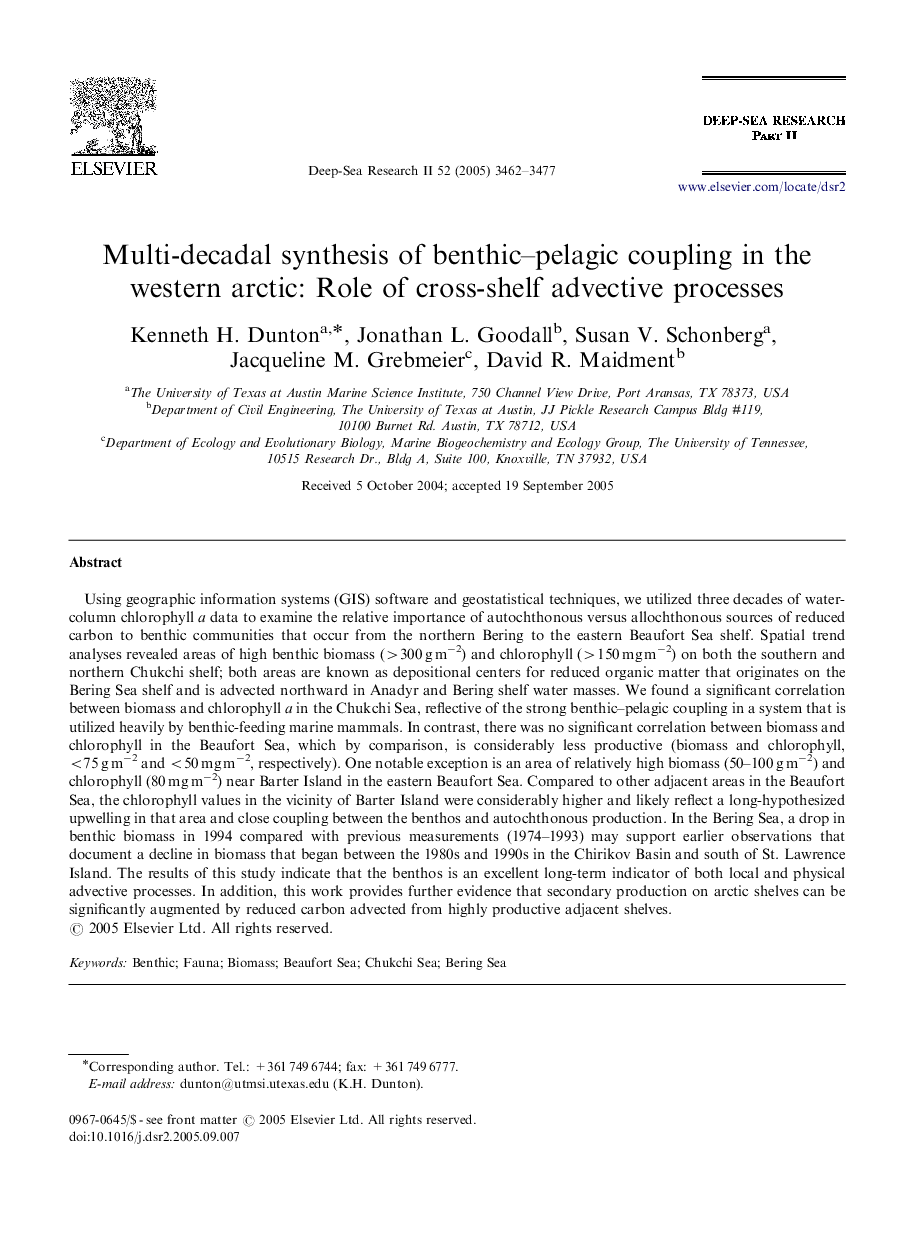| کد مقاله | کد نشریه | سال انتشار | مقاله انگلیسی | نسخه تمام متن |
|---|---|---|---|---|
| 4537586 | 1626520 | 2005 | 16 صفحه PDF | دانلود رایگان |

Using geographic information systems (GIS) software and geostatistical techniques, we utilized three decades of water-column chlorophyll a data to examine the relative importance of autochthonous versus allochthonous sources of reduced carbon to benthic communities that occur from the northern Bering to the eastern Beaufort Sea shelf. Spatial trend analyses revealed areas of high benthic biomass (>300 g m−2) and chlorophyll (>150 mg m−2) on both the southern and northern Chukchi shelf; both areas are known as depositional centers for reduced organic matter that originates on the Bering Sea shelf and is advected northward in Anadyr and Bering shelf water masses. We found a significant correlation between biomass and chlorophyll a in the Chukchi Sea, reflective of the strong benthic–pelagic coupling in a system that is utilized heavily by benthic-feeding marine mammals. In contrast, there was no significant correlation between biomass and chlorophyll in the Beaufort Sea, which by comparison, is considerably less productive (biomass and chlorophyll, <75 g m−2 and <50 mg m−2, respectively). One notable exception is an area of relatively high biomass (50–100 g m−2) and chlorophyll (80 mg m−2) near Barter Island in the eastern Beaufort Sea. Compared to other adjacent areas in the Beaufort Sea, the chlorophyll values in the vicinity of Barter Island were considerably higher and likely reflect a long-hypothesized upwelling in that area and close coupling between the benthos and autochthonous production. In the Bering Sea, a drop in benthic biomass in 1994 compared with previous measurements (1974–1993) may support earlier observations that document a decline in biomass that began between the 1980s and 1990s in the Chirikov Basin and south of St. Lawrence Island. The results of this study indicate that the benthos is an excellent long-term indicator of both local and physical advective processes. In addition, this work provides further evidence that secondary production on arctic shelves can be significantly augmented by reduced carbon advected from highly productive adjacent shelves.
Journal: Deep Sea Research Part II: Topical Studies in Oceanography - Volume 52, Issues 24–26, December 2005, Pages 3462–3477